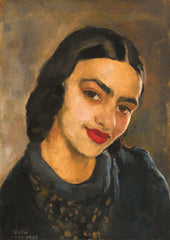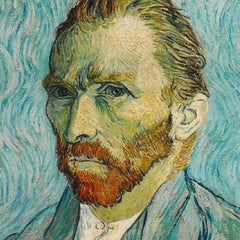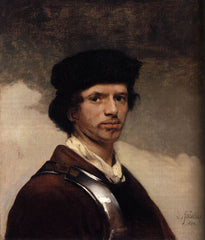Top 10 Paintings By Amrita Sher-Gil; That Pioneered Modern Indian Art
A pioneer of Indian modern art, Amrita Sher-Gil was among the greatest avant-garde women artists of the 20th century. Hardly acknowledged in her lifetime, her work especially the famous portrait paintings, is considered among the most expansive by any Indian artist.
Born in Budapest on Jan 30, 1913, to an Indian Sikh father (Umrao Singh Sher-Gil, a Sanskrit scholar) and a Hungarian mother (Maria Antoinette, an opera singer), her aesthetic sensibility was a blend of European and Indian elements. Let’s discover some of her famous paintings.
Amrita Sher-Gil painted Three Girls in 1935 and it was the first work to be painted by Sher-Gil after returning to India from Europe in 1934. Sometimes referred to as Group of Three Girls, the painting won the Gold Medal at the annual exhibition of the Bombay Art Society in 1937. The painting was part of a batch sent to Nawab Salar Jang of Hyderabad who later rejected them all!
The painting shows three colorfully dressed women contemplating a destiny they are unable to change. Amrita Sher-Gil did not sensualize her women but instead portrayed them as facing great adversity yet having the spirit to transcend a destiny that they were unable to change.
The painting reflects the influence of the works of French painter Paul Gauguin on Sher-Gil's work. It also marks Sher-Gil's move from an earlier academic and realist style of painting that she had learned in Paris towards a flattering style with modern compositions, where line and color are prominently used. In Three Girls, the girls' surrounding is not shown. Their situation is made evident through their facial expressions, their body language, and the skillful use of tones.
Sher-Gil wrote, “I realized my real artistic mission, to interpret the life of Indians and particularly the poor Indians pictorially; to paint those silent images of infinite submission and patience,... to reproduce on canvas the impression those sad eyes created on me.”
Part of the South Indian trilogy, Bride's Toilet along with paintings done in this period was inspired by the classical tradition of the Ajanta murals. Amrita Sher-Gil painted the image with a large group of figures and used a richly diverse palette to delineate them.
Nothing puts you down quite like being forced to marry someone you don’t love! This was Amrita Sher-Gil’s angle though. “Sher-Gil was enthralled by common people, their beauty, sadness, and struggles.” A professor of hers in Paris “had often said that judging by the richness of her coloring, she was not really in her element in the grey studios of the West, that her artistic personality would find its true atmosphere in the color and light of the East.” Though this is at its core pretty racist, the professor was right. Sher-Gil was no longer inspired by the mundanity of Europe and headed to South India for inspiration. And the inspiration she found!
During her travels, she came across the Ajanta Caves in Aurangabad district of Maharashtra and the Mogul miniatures of South India. She was forever touched by each of these styles but deeply depressed by the neglect of art by the Indian people. So she decided to light a fire in the artistic loins of India. She began to incorporate the frescos of the Ajanta Caves and the miniatures of the Moguls into her European training, resulting in works like Bride’s Toilet.
Many scholars consider Brahmacharis as one of Amrita Sher Gil's greatest masterpieces. The painting is a part of the South Indian trilogy that resulted from the artist's sojourn in the South in 1937. Sher-Gil's experience of the Ajanta murals inspired her visual language at this time, particularly in the figuration and gestures.
In this oil-on-canvas painting above, she has captured a seductive and exuberant mood. In this painting, one can see the rich painterly treatment of colors depicting a provocative young woman with bold red lips, dark, cascading hair, prominent eyes with a teasing smile.
Amrita Sher-Gil often painted portraits of friends, family, and fellow students. Sumair was the artist's cousin. The artist has depicted the subject as an effervescent, charming young woman with the building up of the surface on the canvas with a thick layering of pigments.
Created in 1930, this portrait painting depicts her as an elegant, fur-clad young lady with minimalist jewelry and a beret.
The pose in this famous portrait painting is indeed very static, yet the brilliant use of color by Sher-Gil lends substantial energy and vitality to the artwork.
This self-portrait of Sher-Gil fetched £1.7M at auction at Christie's in London in 2015.
Painted in 1931, when she was in Paris for the first time to study at the famous French art school, the Ecole des Beaux-Arts.
It is believed that Sher-Gil’s mother wanted her to marry an affluent landowner’s son but she was in love with her cousin, Victor Egan. She has captured the same troubled expression in the painting.
Wearing a French-style hat, called beret, she is looking away so as to avoid any interaction with the viewer. The golden bowl sitting empty next to her reflects the emotional emptiness that she experienced as an 18-year-old, torn between the various loves of her life.
A Hungarian-Indian, Sher Gil’s ‘Self-Portrait as a Tahitian’ is the perfect representation of her exploration of the body and the self, caught in convoluted coordinates of nationality as well as sexuality.
Adapting the nude-art style popularised by the French artist Paul Gauguin, she presented herself as a Tahitian in this famous portrait painting.
This self-portrait seems sexually complex, displaying her uncanny ability to express her thoughts and ideas on the canvas.
Young Girls, painted in 1932, won Amrita Sher-Gil an associate membership at the Grand Salon in 1933. Sher-Gil's sister Indira was the formally clad figure of the visitor in the painting. Amrita’s sister Indira sits on the left clothed in chic European garb, while the partially undressed figure in the foreground is a French friend, Denise Proutaux. This painting was awarded a Gold Medal at the Grand Salon in 1933.

Painted in 1933, this is a rare and the most famous portrait painting by Amrita Sher-Gil which was sold for a record of $2.92 million in Sotheby’s New York auction./,
In this self-portrait, her look is full of expectant desire with a slight hint of an enigmatic smile and a mischievous twinkle in her eye. However, it is the fiery-red lips that draw the viewer’s attention.
The chiaroscuro effect is captured brilliantly in the painting wherein the light is seen hitting the side of her face, surrounded by the darker colors of her clothing, hair, and background. No wonder, this charming 18x13 inch self-portrait is a leading example of Sher-Gil’s oeuvre.
Longing to get back to her roots, she returned to India in 1934 which marked a new phase in her art journey. During her stay in India, she rediscovered traditional Indian art which greatly influenced her work and created famous paintings such as Ladies Enclosure, Siesta and Village Scene, a trilogy of Bride’s Toilet, and Brahmacharis.
Amrita Sher-Gil’s “The Little Girl in Blue” fetched a whopping Rs 18.69 crore at Sotheby’s maiden auction in India—“Boundless: India”, setting a record price for the artist in the country.
Painted in India in December 1934, when the artist was just 21, The Little Girl in Blue depicts the artist’s 8-year-old neighbor, Lalit ‘Babit’ Kaur. Her mother, Lady Buta Singh, was a close friend who lived next door to Sher-Gil’s paternal uncle, Sunder Singh Majithia at Nowshera House.
Hill Women/People From The Mountains
‘I began to be haunted by an intense longing to return to India’, Sher-Gil wrote, ‘feeling in some strange inexplicable way that there lay my destiny as a painter.’
In 1934 the family left Paris to move to Shimla, in the western Himalayas. Sher-Gil painted intensively and traveled widely, keen to observe and represent Indian villagers and their way of life.
In the year 1935, she produced a pair of paintings entitled Hill Men and Hill Women showing groups of Indian villagers. The simplified and stylized handling of the figures with their sad expressions and the paintings’ elongated vertical compositions evoke a sense of dignity as well as pathos.
Sher-Gil is a bewitching, enigmatic figure whose life entices almost as much as her art, and she was the inspiration behind the female painter in Salman Rushdie's The Moor's Last Sigh. Born in Budapest in 1913 to a Hungarian opera singer and an aristocratic Sikh scholar, Sher-Gil enrolled in Paris's prestigious École des Beaux-Arts at 16.
Her gusting free spirit was already evident - she had been expelled from a convent school in India - and she soon became enamoured of the modish modern art crackling through the French capital, as well as the bohemian lifestyle that went with it. She found her subject in the female form and began to paint a series of sensuous, highly charged nudes. Sleep (1933), which depicts her younger sister Indira, is possibly the most erotic, with its sinuous swellings and subtle fluctuations of flesh.
“I can only paint in India. Europe belongs to Picasso, Matisse, Braque, and many others. India belongs only to me.” — Amrita Sher-Gil
She died in December of 1941 at a young age of 28 years and days before opening her first major solo exhibition. Her life was short, but very prolific, as she left a legacy of artwork.
With a fearless and rebellious spirit, Sher-Gil was indeed an artist who defied norms!




















Comments
JYNMuQpEhoZCLT
yRfdlQkCsV
RasTDJZuQNK
LgJvDHFPsEiABrS
tMZreHIQAFP
lHNYxSrVcikvZ
uDBtWjbVrLn
GfqYdIevCmQzUt
CNJldUcS
bKMCIamdLu